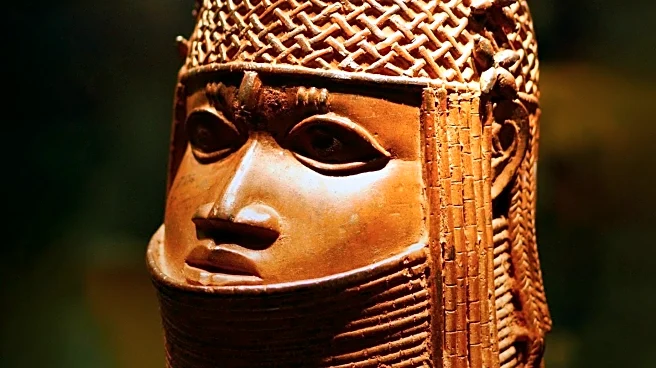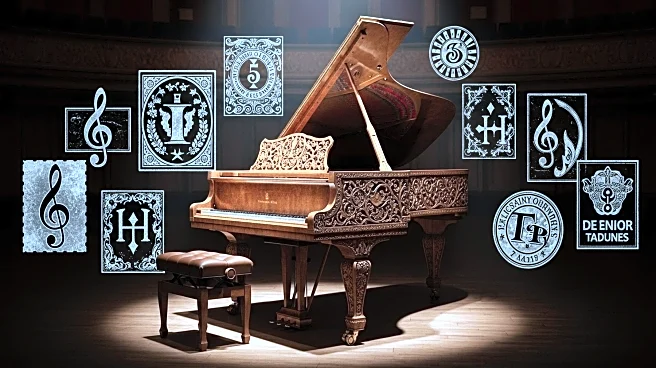What's Happening?
Cultural leaders from the Shuar community in Ecuador have called for the repatriation of a collection of shrunken heads, known as tsantsas, from the Pitt Rivers Museum in Oxford. These artifacts, acquired between 1884 and 1936, were removed from public display in 2020 as part of a decolonization process following complaints from Shuar leaders. During a recent visit to Oxford, Shuar members emphasized the importance of understanding these cultural artifacts and advocated for their return to Ecuador. The tsantsas, made from human, sloth, or monkey heads, were historically sought after by collectors and are considered cultural heritage by the Shuar people.
Why It's Important?
The call for repatriation highlights ongoing discussions about the ethical treatment of cultural artifacts and human remains in museums. The Shuar community's request underscores the need for museums to engage with indigenous groups in the preservation and interpretation of their cultural heritage. This situation reflects broader movements towards decolonization in museum practices, aiming to rectify historical injustices and promote cultural understanding. The repatriation of such artifacts could strengthen cultural ties and provide opportunities for education and reconciliation between the UK and Ecuador.
What's Next?
The Pitt Rivers Museum is engaged in ongoing dialogue with the Shuar community regarding the future of the tsantsas. This conversation may lead to the eventual repatriation of the artifacts, fostering a collaborative approach to cultural heritage management. The museum's director, Prof Dr Laura Van Broekhoven, has acknowledged the importance of involving indigenous communities in the display and interpretation of their cultural artifacts. Future steps may include formal agreements and logistical arrangements for the return of the tsantsas to Ecuador.
Beyond the Headlines
The repatriation of cultural artifacts raises important ethical and legal questions about ownership and the responsibilities of museums. It challenges institutions to reconsider their roles in preserving history and to address the narratives they present. This case may influence other museums to reevaluate their collections and engage more actively with indigenous communities, potentially leading to a shift in how cultural heritage is managed globally.











